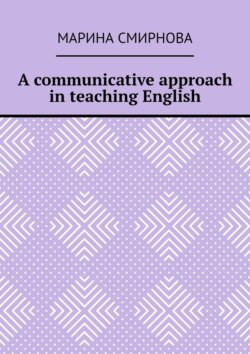Читать книгу A communicative approach in teaching English - Марина Смирнова - Страница 5
How to speak English only
ОглавлениеWhat typical problems does a teacher have to tackle while speaking only English at the lesson?
– Speaking English with young learners who are not prepared and can’t understand any information yet.
– With beginners the problem is the same as with young learners.
– Reacting to their Russian – students tend to speak Russian when they know their teacher is not a native speaker.
– Simplifying – a teacher needs to learn how to simplify their speech to make it comprehensive for the students of low levels.
– Pacing – a gradual presentation of the material.
– Using supplementary materials – there are a lot of them to visualise new vocabulary.
The solutions for these problems may be:
For young learners:
– prepare the materials supporting new words visually: cards, images, presentations, toys, puppets.
– Use a lot of gestures and facial mimicry, show actions with your movements, don’t be shy to act and play together with them.
– Try to use simple language, do not paraphrase commands (let’s say together – should always be the same, don’t change it into «let’s repeat, or repeat after me…»)
– Let them touch, watch and move a lot while studying, repeat the words you’ve said and keep their own tempo, don’t accelerate them much.
For beginners (teenagers \ adults):
– use a screen-demonstration (if online) or handouts and board actively (if off-line).
– Visual support is also very important, provide the video with short dialogues, repeat them after the audio-recordings, use images for new words.
– Simplify your language: speak distinctively and slowly, repeat and paraphrase your sentences if they fail to understand them.
– The body language is as important as visualization.
Reacting to students using their native language instead of English:
– if they ask something or say something in Russian, react and answer in English, ask them to repeat their question in English writing down or saying the words they didn’t know.
– If they ask you to say something in Russian, the way it works is to show them the picture of the word on the Internet (if online) or paraphrase what you have said or give them the synonymous row.
– The worst thing is to be overprotective and translate everything you said into Russian for them. They should get used to think in English and guess the meanings of unknown words through the context.
Simplifying:
– if you work with lower levels, you will need to be precise and use the structures that they know when giving instructions.
– The images are used to give them the idea of what the words on the list mean. You should visualise as more as possible.
– If the task seems too difficult for the level, you can give additional prompts and adapt the material for the students to make it less elaborate.
Pacing:
– give a new material gradually, don’t hurry up.
– Some topics can be divided into parts.
E.g. Present Perfect is better to divide into working with each meaning during one or even two lessons at the same time enriching the vocabulary.
– Make sure there isn’t a big gap between the spoken and grammatic material. You should pay more attention to the involvement of students into talking, but compose the material so that they could practise grammar structures while talking too.
– E.g. Present Perfect is well understood in the context of such a topic as «Travelling» because you can ask questions with «Have you ever been..?» and others about their experience.
Supplementary materials:
– pictures \ online images,
– presentations (online),
– apps and programmes (learning apps, kahoot, bamboozle, wordwall, quizlet) – online and at the computer,
– printed handouts,
– audio \ video,
– cards (not only with images, with roles, tasks…),
– toys, etc.
They are needed for visualisation, games, speaking practice and they help you involve students in the communicative process at the lesson.
